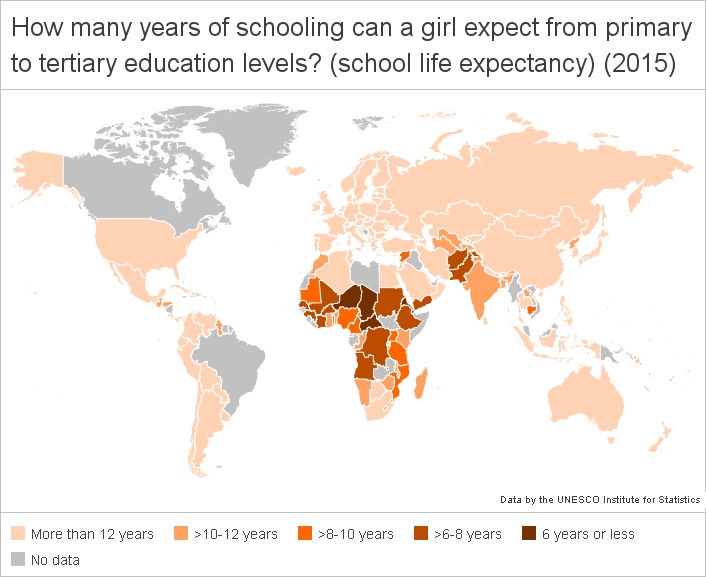Where are the most marginalized girls on International Women’s Day? Not in school
This blog post was written by Silvia Montoya, Director of the UNESCO Institute for Statistics. It was originally posted on 7 March 2016 here.
Where are the most marginalized girls on International Women’s Day? Not in school
New UNESCO Institute for Statistics eAtlas shows too many girls are still left behind
International Women’s Day has unleashed a tide of messages and infographics showing progress and pitfalls in reducing the gender gaps in just about every area – from the numbers of women elected to public office to literacy rates in developing countries.
Discussion is good but action is better. It is therefore essential to focus on where the inequalities begin and how they can be directly addressed.
The answer lies in education. Without education, we will never change the mindsets and conditions that force a girl into marriage or leave a woman of any age without the skills to earn a decent living.
New eAtlas shows too many girls are still left behind
Let’s face the facts. The new UNESCO eAtlas of Gender Equality in Education shows gender gaps from primary to tertiary education using the latest available data from the UNESCO Institute for Statistics. With more than 100 interactive maps and charts, the eAtlas shows the educational pathways of girls and boys in more than 200 countries and territories.
Despite all the efforts and progress made over the past 20 years, girls around the world are twice as likely as boys to remain completely excluded from education. And the situation is even worse when we look past the global averages to three regions: sub-Saharan Africa, South and West Asia and the Arab States.
In sub-Saharan Africa, more than 30 million children between the ages of 6 and 11 are out of school. Some of these children will start at a later age but many more will remain entirely excluded, with girls facing the biggest barriers. Within this marginalized group, 9.5 million girls will never set foot in a classroom compared to 5 million boys, according to UIS projections.
The gender gap is even wider in South and West Asia, where 80% of girls out of school will never start compared to 16% of out-of-school boys. About 4 million girls across the region will remain excluded from education compared to almost 1 million boys.
In the Arab States, girls form the majority of the millions of children excluded from school, although precise estimates are impossible to produce with the conflict raging in Syria.
Educating girls is key to achieving sustainable development
We will never achieve any of the Sustainable Development Goals without overcoming the discrimination and poverty that stunt the lives of girls and women from one generation to the next. Every goal – from ending hunger and poverty to climate change – is grounded in the need for equitable and quality education for all.
So instead of celebrating International Women’s Day with slogans and hashtags, let’s take a hard look at the statistics and use them to get every girl in school, learning and on her way to empowerment.
On the bright side, the data clearly show that the girls who do manage to start primary school and make the transition to secondary education tend to continue their studies, with the hope and determination of improving their lives and those around them.
You can easily embed and share the maps and charts of the UNESCO eAtlas of Gender Inequality in Education, which is automatically updated with the latest available data. Just grab the embed code or share on social media.



